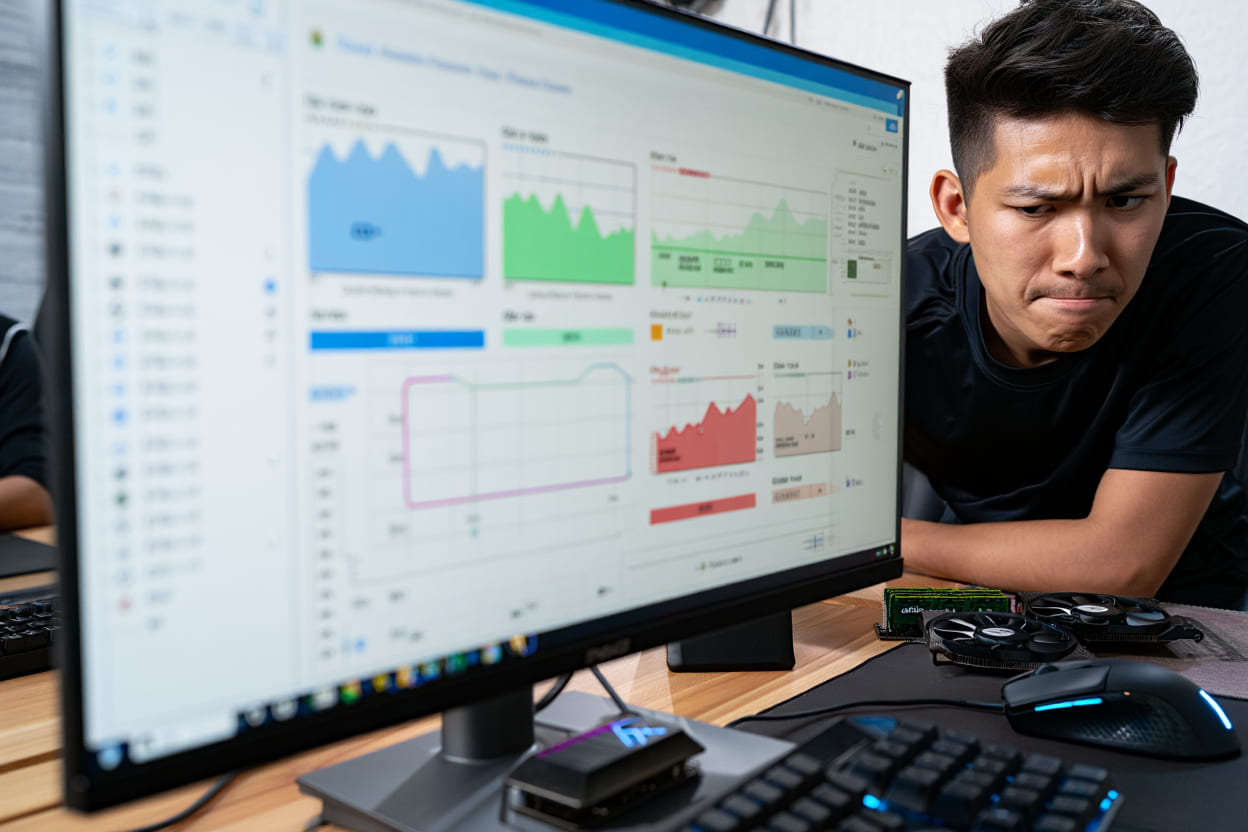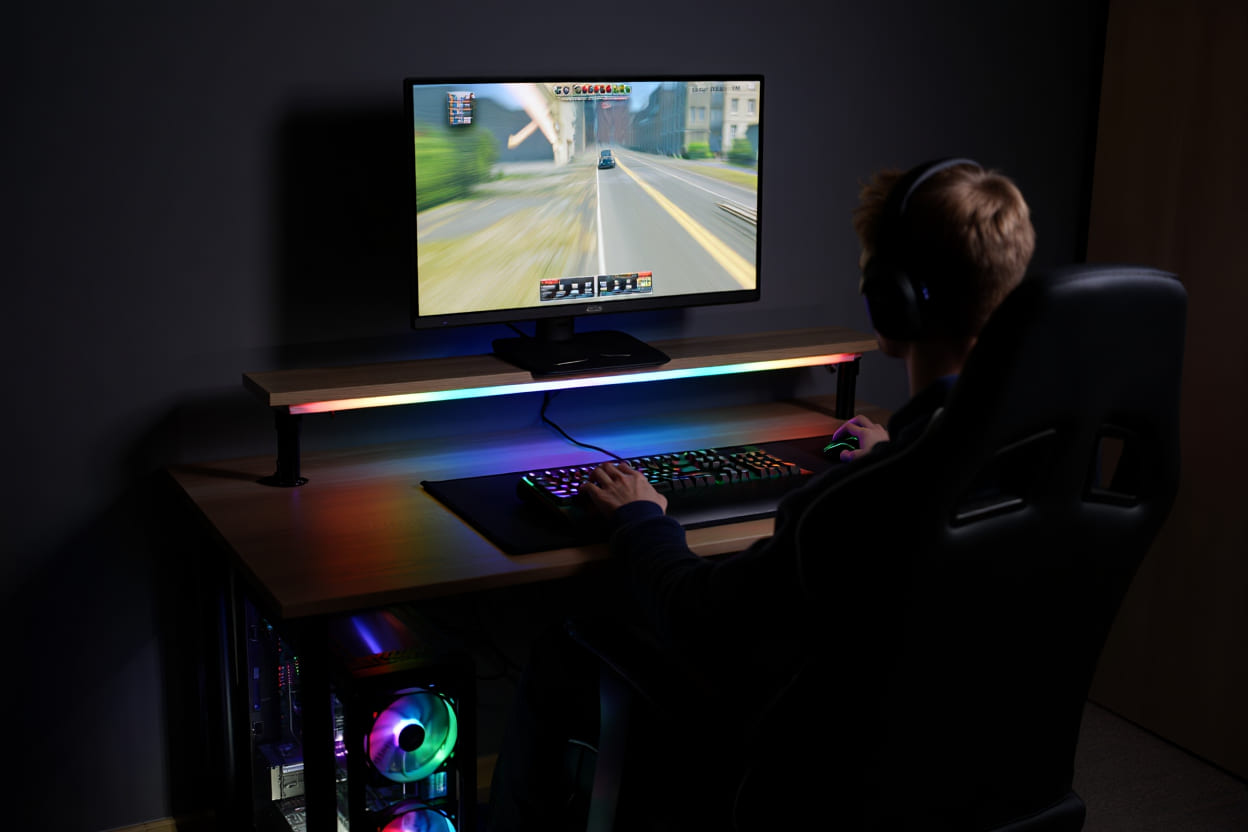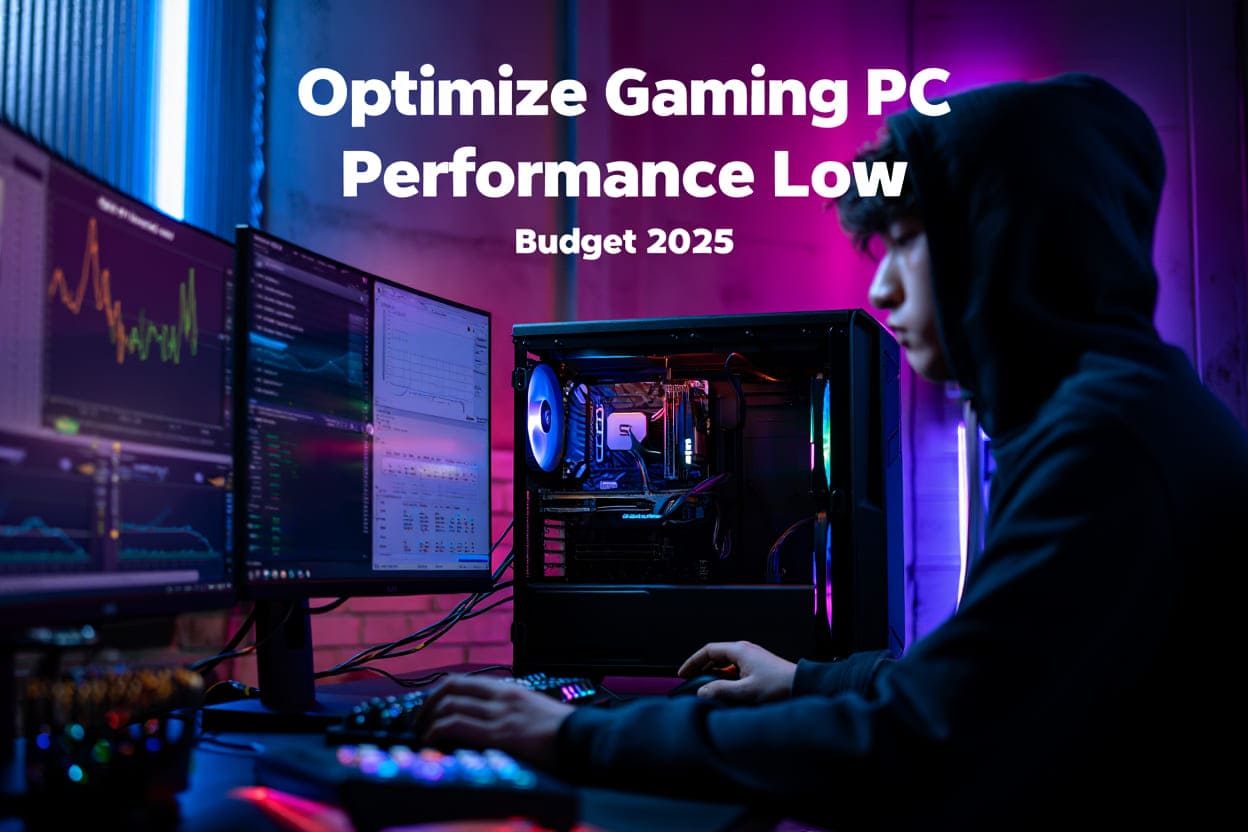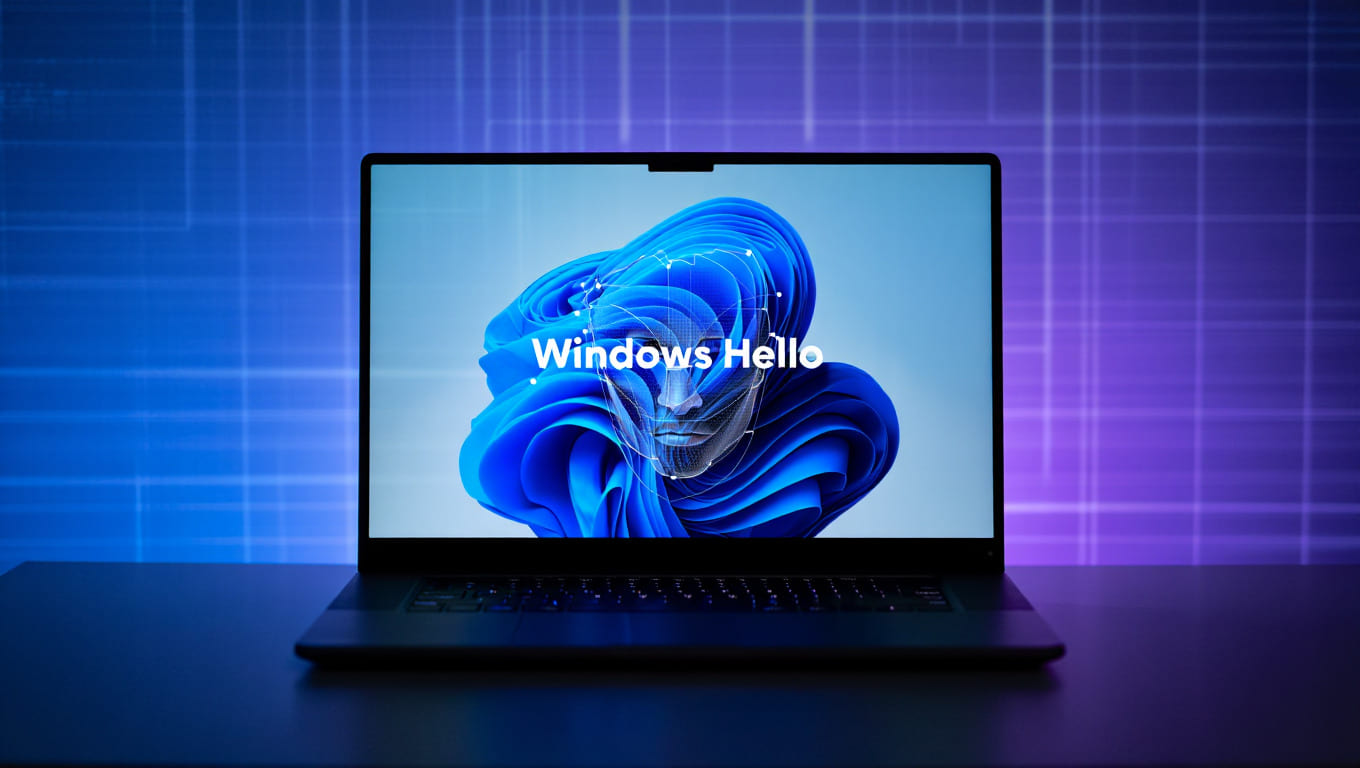Are you trying to optimize gaming PC performance low budget and enjoy smoother gameplay without spending a fortune? In 2025, many gamers still deal with low FPS, stuttering, and aging hardware like Intel i5-4xxx CPUs, early Ryzen processors, or integrated graphics that can barely handle modern games.
This guide provides practical, cost-free solutions to boost your gaming performance. From evaluating your hardware and applying OS and driver tweaks to adjusting in-game settings and fixing common issues, you’ll learn step-by-step methods to make your PC run faster and more efficiently.
In this guide, you’ll learn:
-
How to identify and fix performance bottlenecks.
-
Free OS and driver tweaks to boost FPS by 10–25%.
-
In-game settings that improve graphics and stability.
-
Troubleshooting tips and low-cost upgrades for budget gaming PCs.
Let’s dive in and transform your current setup into a smoother, more responsive gaming machine—without breaking the bank.
Optimize Gaming PC Performance Low Budget (2025 Guide)
If you want to optimize gaming PC performance low budget in 2025, start with software tweaks and smart configuration changes before investing in hardware. Even older systems—like Intel i5 4th-gen CPUs, early Ryzen processors, or integrated graphics—can run smoother with the right optimizations.

Key optimizations you can apply:
-
Update drivers: Keep GPU, chipset, and BIOS current for stability and performance.
-
Adjust power settings: Switch to High Performance mode to prevent CPU throttling.
-
Disable background apps: Free up CPU and RAM by turning off non-essential programs using Task Manager.
-
Fine-tune in-game graphics: Lower resolution, shadows, and anti-aliasing to boost FPS.
These tweaks alone can improve FPS by 10–25% without spending a dime, helping you get the most out of your current hardware.
Start here, then follow this guide step-by-step to transform your budget gaming PC into a faster, more responsive machine—no major hardware upgrades required.
Understanding Your Gaming Hardware Constraints
Before you can optimize gaming PC performance low budget, you must first understand your system’s capabilities. Start by checking your key gaming components: CPU, GPU (even integrated), RAM, and storage. On Windows, tools like Task Manager, System Information, or free utilities such as CPU-Z provide quick access to detailed specs.
Realistic performance targets in 2025
Budget parts can still deliver decent gaming performance with the right tweaks:
-
Entry-Level Integrated GPU (Intel UHD 630 / AMD Vega 8): 720p, low–medium settings, 30–40 FPS.
-
Budget Discrete GPU (GTX 1050 / RX 560 Used): 1080p, low–medium settings, 40–60 FPS.
-
Older Mid-Range GPUs (GTX 970 / RX 580): 1080p, medium–high settings, 60+ FPS with optimizations.
Watch out for thermal throttling
Overheating is one of the most common performance killers. If your CPU or GPU runs too hot, it automatically throttles performance to cool down, causing stuttering or sudden FPS drops—even on capable hardware.
Pro Tip: Use free tools like HWMonitor or MSI Afterburner to monitor temperatures and prevent throttling-related slowdowns.
By understanding these constraints, you set realistic expectations and can prioritize system and OS tweaks as your first line of defense for improving gaming performance.
Essential Free System and OS Tweaks for Maximizing Low-Budget Gaming PCs
Improving your system without spending money is key if you want to optimize gaming PC performance low budget. These free tweaks target drivers, power settings, background processes, and storage, delivering noticeable FPS gains and smoother gameplay on older or budget hardware.
1. Updating Drivers and Firmware for Best Performance
Keeping your GPU, chipset, network drivers, and motherboard BIOS/UEFI updated is essential. Updated drivers can improve performance by 10–20%, fix bugs, and enhance compatibility with newer games.
Download drivers directly from the official software provided by your hardware manufacturer. For BIOS updates, access your motherboard’s support page and follow the step-by-step instructions to avoid errors.
Pro Tip: Use built-in tools like GPU driver management software (e.g., GeForce Experience or AMD Adrenalin) to streamline the update process.
2. Power & Performance Settings in Windows
Set your PC’s power plan to High Performance in Control Panel > Power Options to prevent CPU throttling.
-
Balanced mode: Saves energy but can reduce CPU speed—bad for gaming.
-
High Performance mode: Maximizes CPU usage for smoother gameplay.
-
Ultimate Performance mode (Windows 10/11 Pro): Unlock via Command Prompt to remove power-saving limits for desktops.
3. Disabling Unnecessary Startup and Background Programs
Background apps can waste CPU and RAM, leaving fewer resources for gaming.
-
Open Task Manager > Startup tab to disable high-impact programs.
-
Use MSConfig for advanced startup control.
-
Avoid disabling critical services such as antivirus or system processes.
A leaner startup means more memory and CPU cycles dedicated to gaming.
4. Gaming Features in Windows
-
Game Mode: Prioritizes gaming performance by reducing background activity.
-
Xbox Game Bar: Provides overlays but may increase input lag; disable if you notice performance drops.
-
Hardware-Accelerated GPU Scheduling: Improves GPU efficiency on modern cards but may cause instability on older hardware—test before using.
5. Storage Optimization for Faster Load Times
-
Use Disk Cleanup to remove unnecessary files and free up space.
-
Defragment HDDs monthly to speed up data access.
-
For SSDs: Never defragment. Ensure TRIM is enabled to maintain performance and drive health.
Related Resource: Learn more about Disk Cleanup Utility to keep your storage optimized.
By applying these free tweaks, you can significantly improve system responsiveness and gaming performance without spending money. These steps form the foundation for maximizing your hardware before considering any upgrades.
In-Game Settings: Zero/Low-Cost Graphics and Performance Tweaks
If you want to optimize gaming PC performance low budget, fine-tuning in-game graphics settings is one of the easiest and most effective ways to boost FPS without spending money.
Key graphics settings to adjust:
-
Resolution: Lowering from 1080p to 720p can provide a significant FPS boost, but at the cost of image sharpness.
-
Shadows: Extremely resource-intensive. Set shadows to low or off to gain extra performance.
-
Textures: Reduce to medium or low to free up GPU memory, especially useful for GPUs with limited VRAM.
-
Anti-aliasing (AA): Improves visual smoothness but costs performance. Use FXAA or turn it off if needed.
Pro Tip: Use in-game FPS counters or tools like MSI Afterburner to measure performance changes after each tweak.
For advanced users, modifying configuration files or launch options can further optimize performance. Disabling VSync can remove input delay, while switching to Fullscreen mode instead of windowed mode may improve responsiveness.
Fine-Tuning RAM and Virtual Memory for Budget Systems
Low RAM forces games to use slower storage as virtual memory, resulting in lag or stuttering. To fix this:
-
Close unnecessary apps such as browsers or background software before gaming.
-
Adjust virtual memory (pagefile): Go to System Properties > Performance Settings > Advanced and increase it if you have limited physical RAM.
-
Use ReadyBoost: On PCs with less than 8GB RAM, ReadyBoost can slightly improve performance by using a fast USB drive to supplement memory.
Checklist for smoother gameplay:
-
Close background programs before launching games.
-
Optimize virtual memory settings.
-
Monitor RAM usage using Task Manager to avoid bottlenecks.
By following these tweaks, you can significantly improve FPS, reduce stuttering, and optimize gaming PC performance low budget without upgrading your hardware.
How to Optimize Gaming PC Performance on a Low Budget
To optimize gaming PC performance low budget in 2025, start with these high-impact, no-cost tweaks before considering hardware upgrades. These methods can improve FPS, reduce stuttering, and extend the life of older systems.
1. Update Drivers and BIOS Firmware
-
Keep GPU, chipset, and motherboard BIOS updated for the latest performance improvements and bug fixes.
-
Download only from official sources: NVIDIA, AMD, Intel, or your motherboard manufacturer.
Pro Tip: Updated drivers alone can boost FPS by 10–20%.
2. Adjust Power Settings
-
Switch your PC’s power profile to High Performance or Ultimate Performance (Windows 10/11 Pro) to prevent CPU throttling.
-
Access it via Control Panel > Power Options or enable “Ultimate Performance” through Command Prompt.
3. Disable Startup Programs and Background Services
-
Open Task Manager > Startup to disable non-essential apps.
-
Free up CPU and RAM by turning off unnecessary services, but keep critical system and antivirus processes active.
4. Use Windows Game Mode and Xbox Game Bar Settings
-
Enable Game Mode to prioritize gaming performance.
-
Disable Xbox Game Bar overlays if you notice input lag or frame drops.
5. Optimize Storage for Faster Loads
-
Run Disk Cleanup Utility to remove junk files.
-
Defragment HDDs monthly for faster access.
-
Enable TRIM on SSDs to maintain speed and drive health.
6. Fine-Tune In-Game Graphics Settings
-
Lower the most FPS-intensive settings first:
-
Resolution: Drop from 1080p to 720p if needed.
-
Shadows: Set to low or off.
-
Anti-aliasing: Use FXAA or disable for better performance.
-
7. Close Background Apps and Manage RAM
-
Shut down browsers, updaters, and other background apps before gaming.
-
Adjust virtual memory (pagefile) under System Properties > Performance Settings > Advanced if RAM is limited.
8. Monitor Temps and Performance
-
Use tools like HWMonitor or MSI Afterburner to track CPU/GPU temps.
-
Prevent thermal throttling by cleaning dust and ensuring proper airflow.
By applying these software and configuration tweaks, you can optimize gaming PC performance low budget without spending money. These methods often deliver better ROI than most low-cost hardware upgrades, especially for users with aging or integrated setups.
Troubleshooting & Fixing Common Low-Budget Gaming PC Problems
Even if you follow all the steps to optimize gaming PC performance low budget, you might still face issues like low FPS, stuttering, or crashes. Troubleshooting these problems involves identifying root causes and applying targeted solutions.
Common Problems and Fixes
1. Low FPS or Stuttering
-
Possible Causes: Thermal throttling, outdated drivers, overloaded RAM.
-
Solutions:
-
Monitor CPU/GPU temps using tools like HWMonitor or MSI Afterburner.
-
Update or reinstall GPU drivers from official sources (NVIDIA, AMD, Intel).
-
Close unnecessary background apps via Task Manager.
-
Adjust virtual memory settings if RAM is limited.
-
2. Game Crashes or Freezes
-
Possible Causes: Driver conflicts, corrupted files, malware.
-
Solutions:
-
Perform a clean GPU driver installation.
-
Verify game file integrity through platforms like Steam or Epic Games Launcher.
-
Scan your system for malware or bloatware using trusted tools.
-
Pro Tip: Create a System Restore point before making major system changes to easily roll back if something goes wrong.
Optional Low-Cost Upgrades for Maximum ROI
If you have a small budget (around $30–$50), these upgrades can significantly improve gaming performance:
-
Additional RAM: Increasing from 4GB to 8GB improves multitasking and reduces stuttering in modern games.
-
SSD Upgrade: Replacing an HDD with an entry-level SSD drastically reduces boot and load times.
-
Budget Peripherals: A responsive gaming mouse or keyboard can enhance input accuracy and overall gameplay experience.
For even better value, consider buying secondhand or refurbished parts—but always check the seller’s reputation and warranty policies.
By troubleshooting systematically and applying these cost-effective upgrades, you can optimize gaming PC performance low budget and enjoy smoother gameplay without overspending.
FAQs: Low-Budget Gaming PC Optimization
Even if you follow every step to optimize gaming PC performance low budget, you may still have specific questions about what’s realistic for older or budget hardware. Here are the most common questions gamers ask—and expert-backed answers to help you get the best results.
Q1: Can I really get good FPS on integrated graphics?
A: Yes. While integrated graphics are limited, you can achieve playable FPS (30–60) at 720p resolution by lowering in-game settings, applying system tweaks, and closing background apps to free up resources.
Q2: Is overclocking safe for my old CPU or cheap GPU?
A: It depends. Mild overclocking can boost performance, but it also risks overheating and hardware damage if not done properly. Use monitoring tools like HWMonitor or MSI Afterburner and proceed cautiously.
Q3: Are registry tweaks or optimizer apps safe?
A: Not recommended for beginners. Registry edits can break system stability, and many “optimizer” apps contain bloat or even malware. Instead, focus on proven manual tweaks like driver updates, power settings, and Task Manager optimizations.
Q4: How much improvement can I expect from free tweaks?
A: FPS gains of 10–25% are common when you combine driver updates, power setting adjustments, and in-game graphics optimizations. Results vary depending on hardware condition and game requirements.
Q5: Will using game booster software help?
A: Only slightly. Most game booster apps simply close background tasks—something you can do manually via Windows tools. They’re convenient but not a replacement for proper system optimization.
By applying these tips and understanding your system’s limitations, you can effectively optimize gaming PC performance low budget without unnecessary risks.
Expert Resources & Performance Tools for Budget PC Gaming
If you want to optimize gaming PC performance low budget, using the right tools and trusted resources is critical. These utilities help you monitor hardware, apply safe tweaks, and avoid unnecessary risks.
1. Driver Sources
-
NVIDIA GeForce Experience – Simplifies driver updates and optimizes game settings automatically.
-
AMD Radeon Software – Offers performance monitoring and tuning options for AMD GPUs.
-
Intel Driver & Support Assistant – Keeps Intel integrated graphics and chipsets up to date.
Pro Tip: Always download drivers from official sources to avoid malware and ensure stability.
2. Monitoring Tools
-
MSI Afterburner: Track real-time FPS, temperatures, and hardware usage.
-
HWMonitor: Provides detailed system statistics for CPU, GPU, and motherboard sensors.
These tools help prevent thermal throttling and identify performance bottlenecks.
3. Maintenance Utilities
-
Windows Disk Cleanup: Removes unnecessary files and frees up storage.
-
Defragment and Optimize Drives: Defragment HDDs or run TRIM for SSDs to maintain peak speed.
Learn more about proper maintenance with Disk Cleanup Utility to keep your PC running efficiently.
4. Guides & Forums
-
PC Gamer Optimization Articles: Professional advice for software tweaks and gaming performance.
-
Reddit Communities: Subreddits like r/buildapc and r/lowendgaming offer real-world advice from experienced users.
Supplemental: Clarifying and Comparative Questions on Low-Budget Gaming Optimization
Q1: What are the limits of optimizing a gaming PC without hardware upgrades?
A: Software tweaks can improve efficiency and reduce bottlenecks, but hardware limitations—such as GPU performance or available RAM—still cap overall results.
Q2: How does optimizing settings compare with upgrading components?
A: Optimizations are cost-effective first steps, while hardware upgrades deliver larger performance boosts but require higher investment and compatibility checks.
Q3: Does every game benefit equally from these optimizations?
A: No. Newer, resource-heavy games gain the most from these tweaks. Older or less demanding games may see only minimal improvements.
Q4: Should I invest in cheap peripherals or save for a higher-end upgrade?
A: Peripherals like gaming mice or keyboards improve input accuracy and experience but don’t increase FPS. Focus on resolving core bottlenecks first, such as RAM or GPU upgrades.
By leveraging these tools and expert-backed strategies, you can optimize gaming PC performance low budget safely and effectively, maximizing value from your current setup.

Conclusion
Mastering how to optimize gaming PC performance low budget in 2025 is entirely possible without costly hardware. By applying free OS and driver tweaks, adjusting in-game settings, managing RAM, and performing regular maintenance, you can boost FPS and gaming stability.
Hardware upgrades may help, but smart software optimizations deliver the best value for budget-conscious gamers. Follow these expert-backed methods, monitor your results, and enjoy a smoother gaming experience.
Key Takeaways:
-
Update GPU, chipset, and BIOS firmware regularly for better performance.
-
Use High Performance or Ultimate Performance power plans to avoid CPU throttling.
-
Disable unnecessary startup apps and background processes to free resources.
-
Optimize in-game graphics settings for FPS gains without losing quality.
-
Maintain your system with routine cleanups, driver updates, and malware scans.
For more practical PC optimization tips, explore the Softbuzz homepage or visit the Gaming section to level up your gaming performance without overspending.










![[Download AOE 1]- Legendary Blue Empire Game Original Version 2021 22 [Download AOE 1]- Legendary Blue Empire Game Original Version 2021 21](https://softbuzz.net/wp-content/uploads/2020/07/aoe-1-game-de-che-xanh-huyen-thoai-ban-chuan_softbuzz_6.jpg)